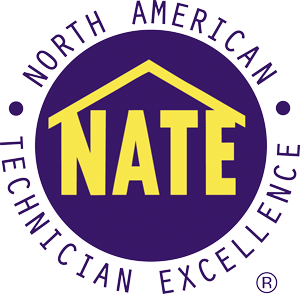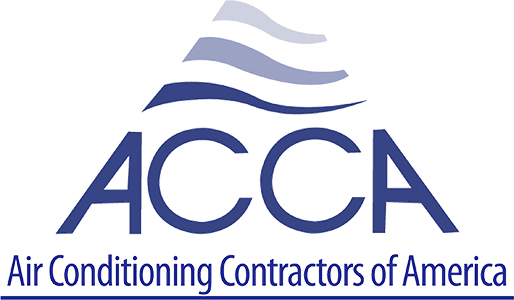
Many of us are living in our homes longer and longer, while others are buying homes that are at least 25-years old, and often 75 to 100 years old. One thing that comes to the forefront in older homes is the condition of the main sewer line (for homes that aren’t on septic tanks).
Main Sewer Lines 25-years or older, are most likely made out of a material that tends to leak at the joints as it ages. The ‘newer’ plastic pipes that are glued or fitted together with gasketed fittings are much more ‘water tight’ than the older pipe systems that were made out of concrete, clay, cast-iron, cement-asbestos, or different types of bitumen coated piping.
Why do Older Pipe Systems Fail?
As time passes, all piping systems tend to move and settle a little, as rain, freezing, and thawing cause ground heaving and movement. When older systems move, they often start to leak at the fittings. Once a leak starts it can do two things; settle the ground under the pipe so it settles more and leaks more, and/or attract roots because it has become a source of water. If roots find the old system, they wiggle their way into the joints, pushing them apart as they grow, causing the pipe to leak, which causes more settling of the pipe; and it keeps getting worse as time passes. Once roots discover a water-source, they will never abandon it.
Even though roots can be ‘jetted’ out of a pipe, or cut out with cable-type roto-rooter machines, or treated with a ‘root-killer’ product; removing and/or killing roots will not repair the leaking pipe; and it will keep getting worse until the leaking area is repaired or replaced.
How Can I know the Condition of My Sewer Pipe?
The only sure way to determine the condition of your sewer line, is to put a Sewer Camera down the pipe and examine the entire system. It’s best to have this done by a professional who can clean and flush the line out first to get the best possible picture, then camera the line from the house all the way out to the Sewer Main in the street. A good company will do this and also provide you with a copy of the video and explain what they have found. In our area it usually runs $300.00 to $500.00 for the video inspection.
What’s the Best Solution?
If the problem is localized to an area of a few feet, it’s usually best just to dig it up and repair the problem. If there is root penetration into an older sewer line so extensive that the whole sewer line has to be replaced, there are essentially three permanent solutions; dig it up to replace the pipe, install a new pipe with a pipe-bursting system, or install a new liner inside the old pipe.
Trenching and Replacing…
Conventional trenching and replacing the pipe is normally the most intrusive remedy, but sometimes this is the only reasonable solution due to the condition of the pipe and a lack of other options. Generally this is thought to be the ‘least’ expensive way to replace a sewer line. But due to the costs of labor and the restoration of landscaping, driveways, sidewalks etc. caused by trenching, this can actually be the most expensive way to repair the line.
Pipe Bursting Replacement Method…
One of the first ‘Trenchless’ methods to come along for replacing a pipe in the ground (sewer lines, water lines, etc.) was the Pipe Bursting method. With this system, an access hole is needed at both ends of the piping to be replaced, and a small, strong, wire cable is threaded through the length of the pipe. One end is connected to a pulling mechanism, and the other end of the cable has a pointed ‘bursting head’ attached to it and the new pipe is attached behind the bursting head. When the bursting head is pulled through the middle of the old pipe, it breaks and pushes the old pipe out of the way, and the new pipe is dragged into place behind it. This works well enough, but it’s impossible to tell exactly what the burst pipe is pushing up against. For that reason some municipalities won’t allow this type of pipe replacement, because existing utilities close to the ‘burst pipe repair’ were ruined by the system. Often this system is less expensive than installing a new liner in the old pipe, so lots of companies like to promote it as a ‘cheaper’ solution.
Installing a New Liner…
If an old existing pipe is in good enough condition structurally, installing a new liner inside is often the best choice. To install a new pipe-liner in an old sewer pipe, first the pipe must be thoroughly cleaned/cabled/jetted and inspected with a video camera to ensure the pipe can be lined without any problems. A hole is then dug at one end of the pipe being lined to access it properly, and a careful measurement is taken to learn how long the new liner needs to be. Next, a special flexible liner is permeated with a special resin, and the liner is ‘injected’ by air pressure down the whole length of the pipe. Then a kind of ‘balloon’ is inserted into the liner, and it’s blown up with enough air pressure to expand the liner and push it against the sides of the old piping. This inflated balloon is kept in place for several hours until the resin cures. When it’s removed, the old pipe has a new, completely smooth plastic liner inside it that won’t leak and attract any roots. Structurally it’s rated almost the same as a new Schedule-40 plastic sewer pipe, typically an equivalent of Schedule-35 pipe.
On any of the above methods, be sure to read the warranty details carefully, and check the ‘track record’ of the installers you choose. A good company should stand behind their work 100% for at least the 1st year, and cover their labor for 10-years. Most pipe bursting or pipe lining manufacturers warranty their materials and product for 25-50 years. If the warranty is less…be careful.
These days, many municipalities are requiring a camera inspection of the main sewer pipe before a home is sold. And they’re often requiring homeowners to be responsible for sewer lines all the way out under the street to the sewer main, not just to the edge of the property. It pays to be careful and invest in a good quality sewer line inspection from a trustworthy company, who will help you with your choices. If you do need to upgrade your existing sewer main, make sure you consider your choices carefully.











